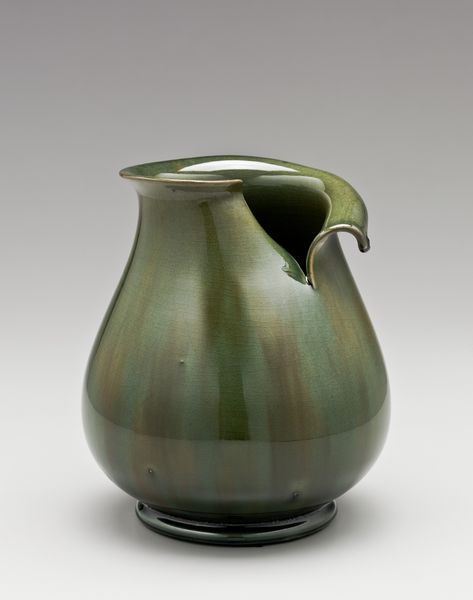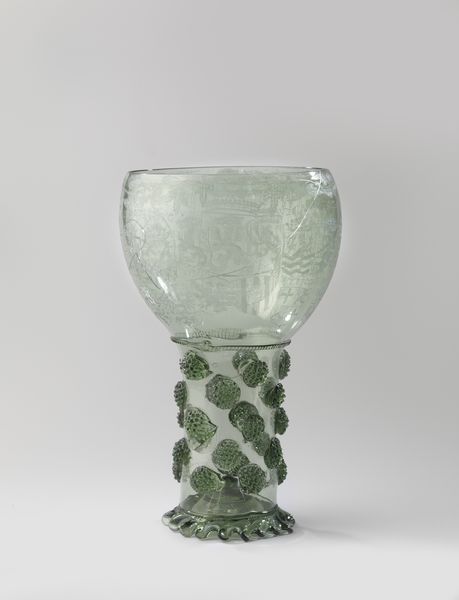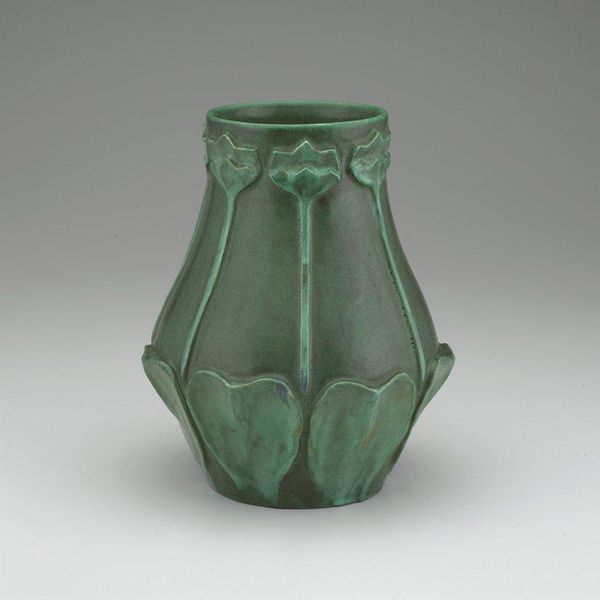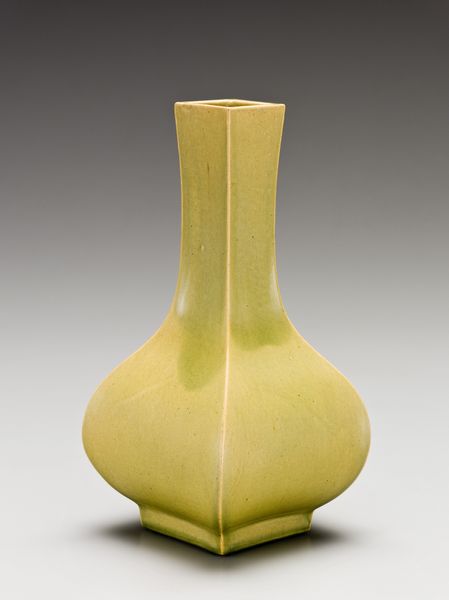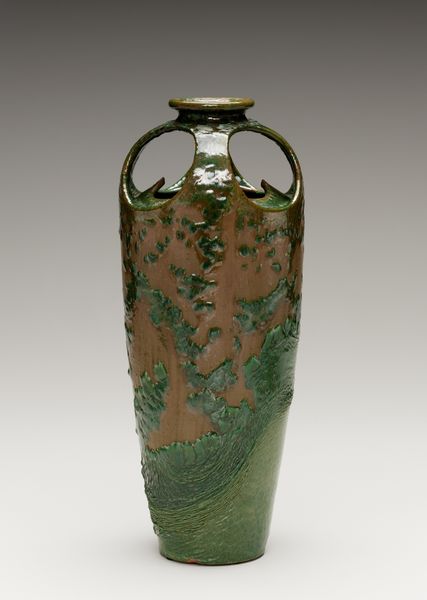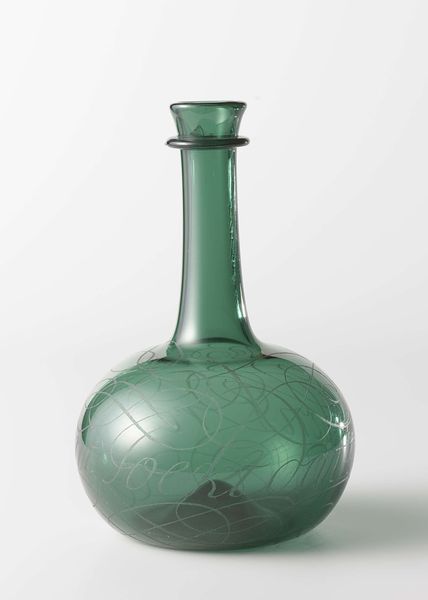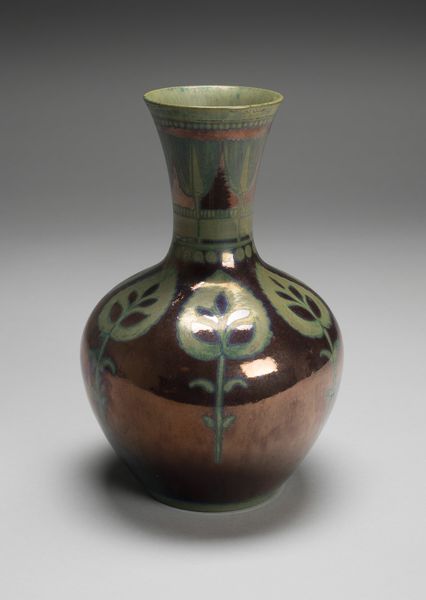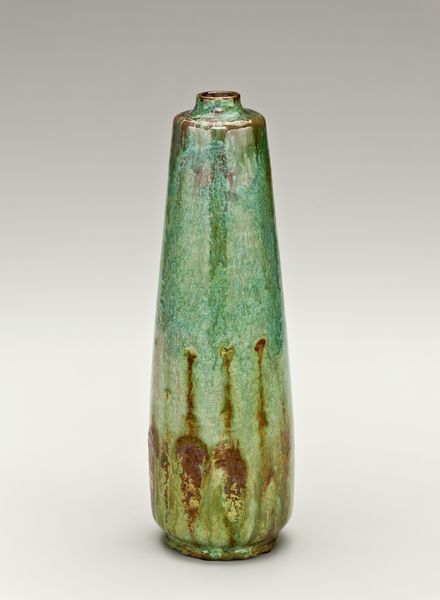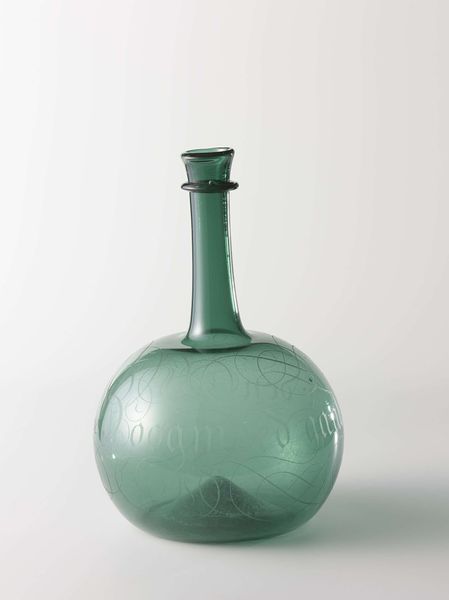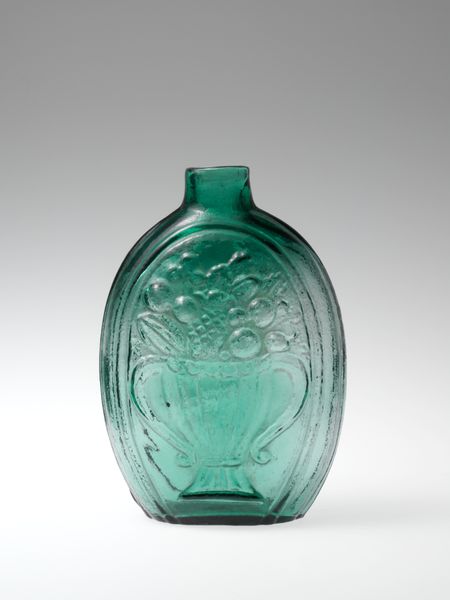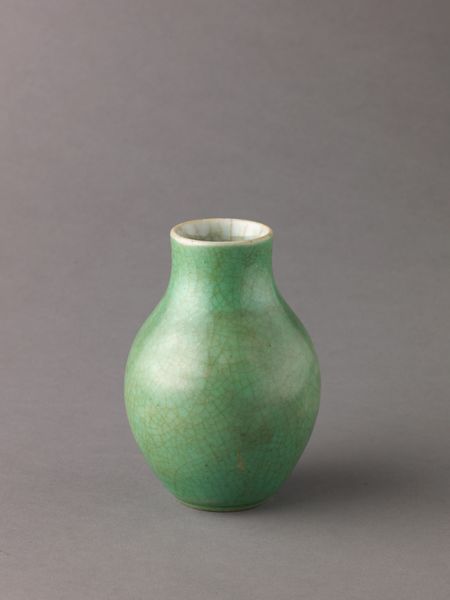
ceramic, earthenware
#
art-nouveau
#
ceramic
#
earthenware
#
decorative-art
Dimensions: 37.5 × 20.3 × 20.3 cm (14 3/4 × 8 × 8 in.)
Copyright: Public Domain
Editor: We're looking at a ceramic vase by the Grueby Faience Company, dating from the early 1900s. It’s green with stylized flowers, a kind of matte finish. It's so interesting how it merges organic shapes with geometric lines. What first comes to mind when you look at it? Curator: Immediately, I see the interplay between nature and industrialization, a very common theme in Art Nouveau. This vase embodies that tension perfectly. Green, a color of growth and life, is used, but contained within a very deliberately shaped object. The stylized flowers - notice how they are simplified, almost iconic representations. This is not realism. Editor: True, the flowers aren’t botanically correct at all. What does that simplification achieve? Curator: It speaks to the dawn of mass production. The flowers aren’t individual blossoms, but repeated motifs, echoing a desire for harmony amidst increasing mechanization. Does it remind you of anything else? Think about nature’s role in society at this time. Editor: Maybe, the Arts and Crafts movement, a bit? The way it references nature, yet its clearly man-made… almost idealized. Curator: Precisely! It's about finding a visual language to cope with rapid change, nostalgia for a past, rendered symbolically. This vase becomes more than a vessel; it's a cultural artifact, reflecting hopes and anxieties about the modern world. What do you take away from that? Editor: That the decorative arts, something I might have dismissed as simply pretty, can hold so much deeper meaning and reflect complex societal anxieties. Curator: Absolutely. Objects carry encoded stories. Now, whenever you encounter a vase, ask: what is it really saying?
Comments
No comments
Be the first to comment and join the conversation on the ultimate creative platform.

